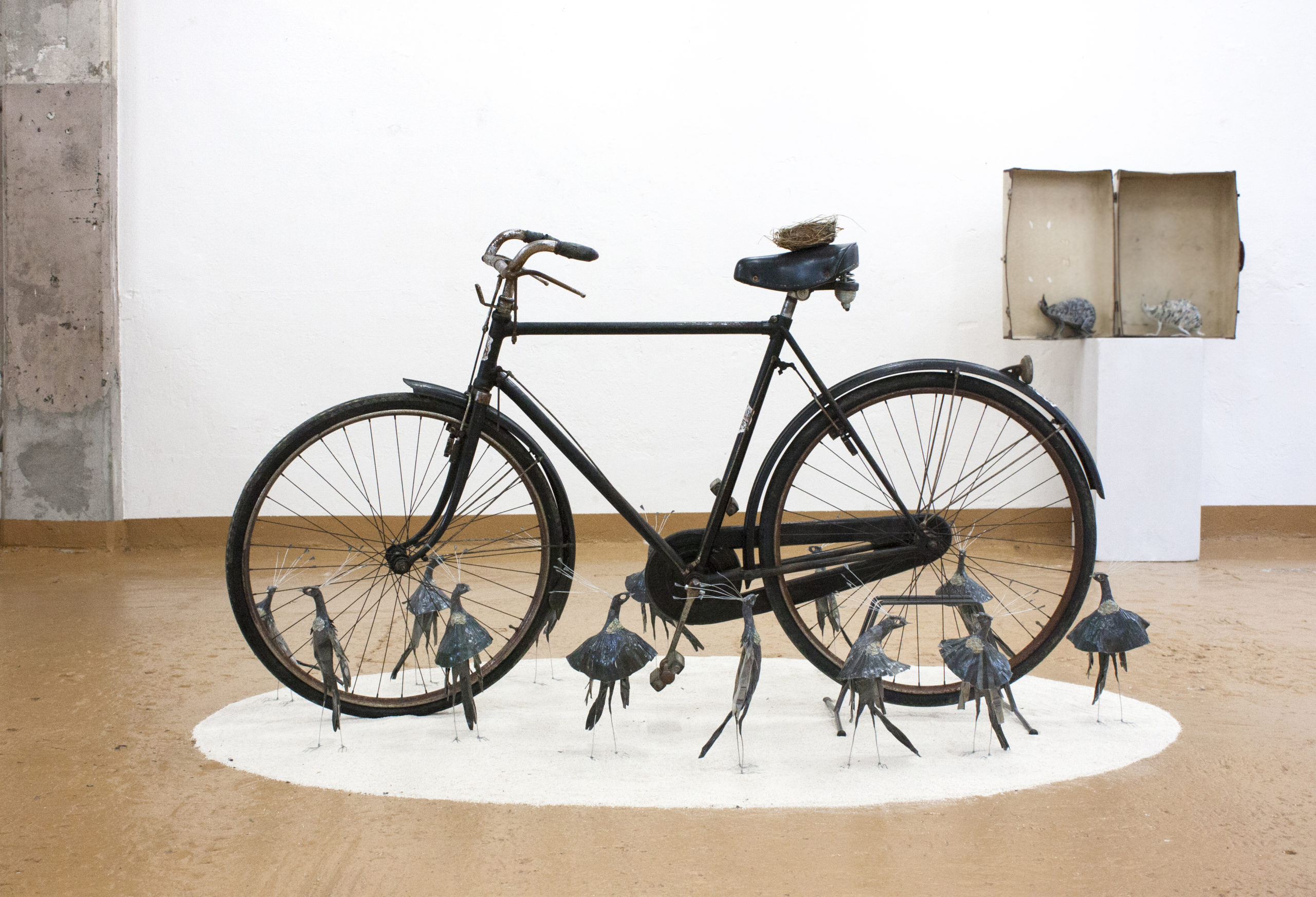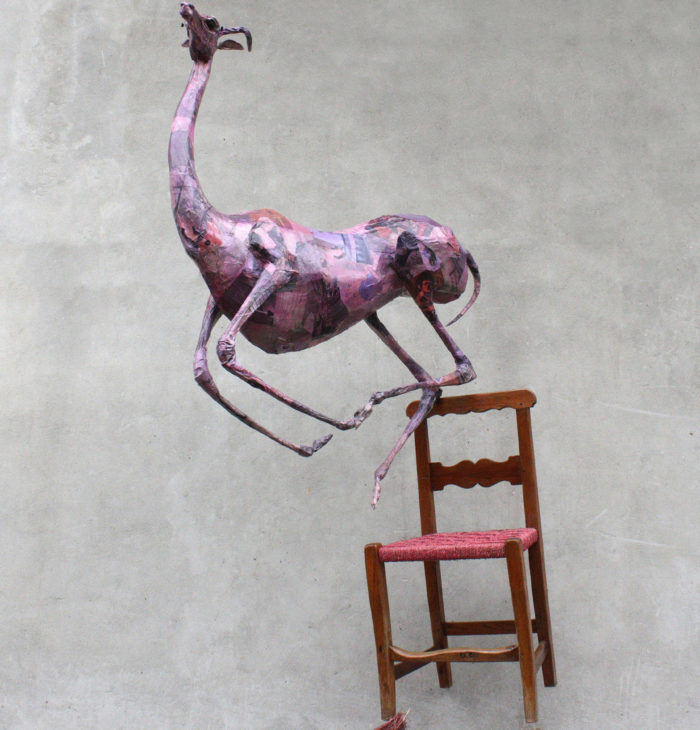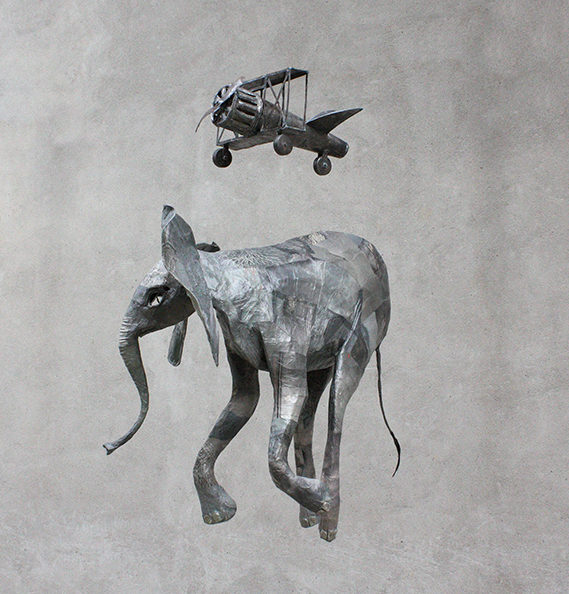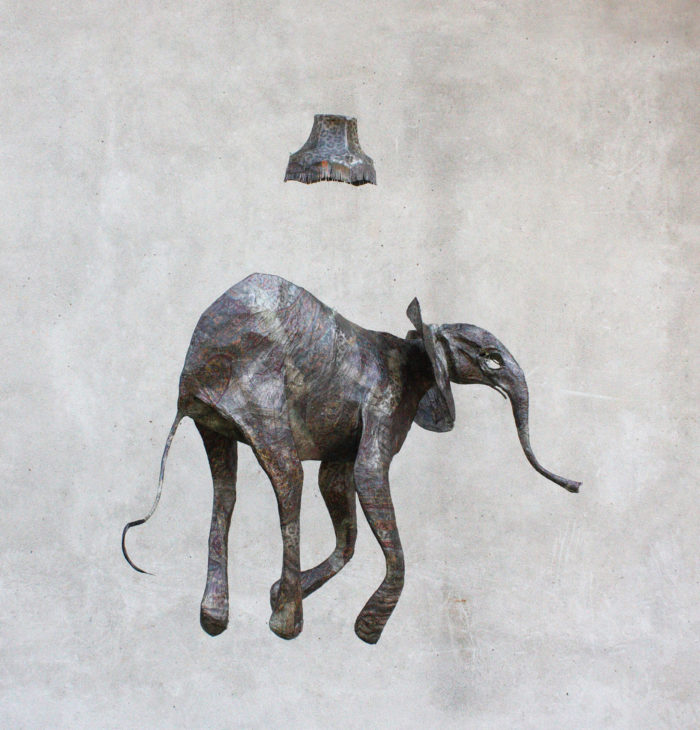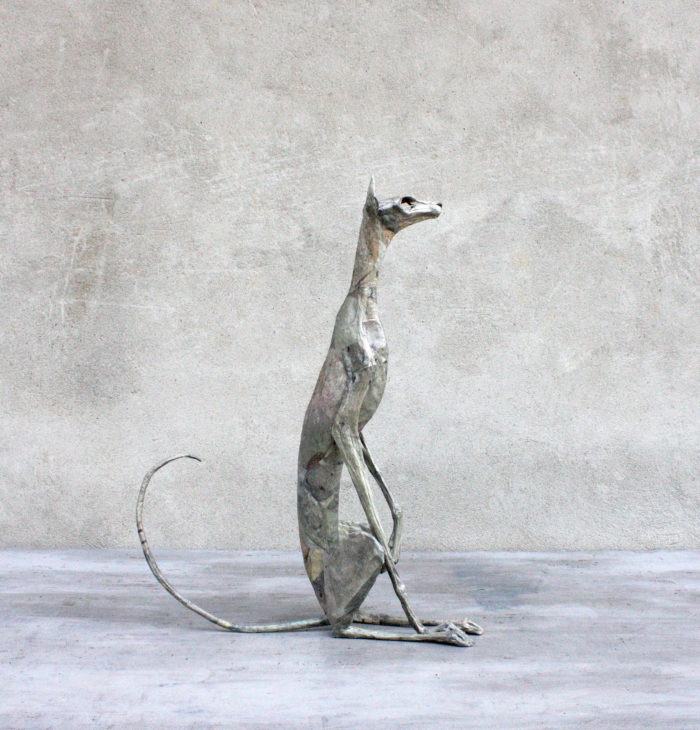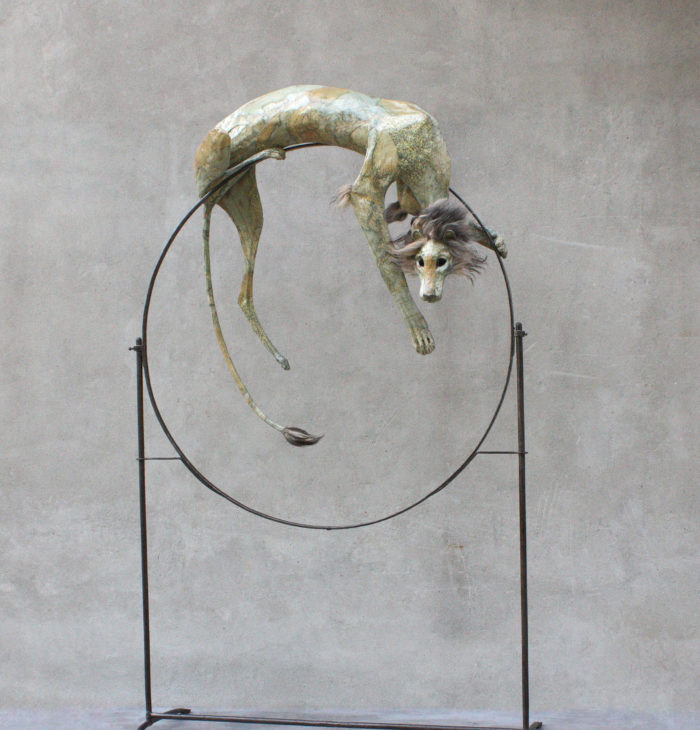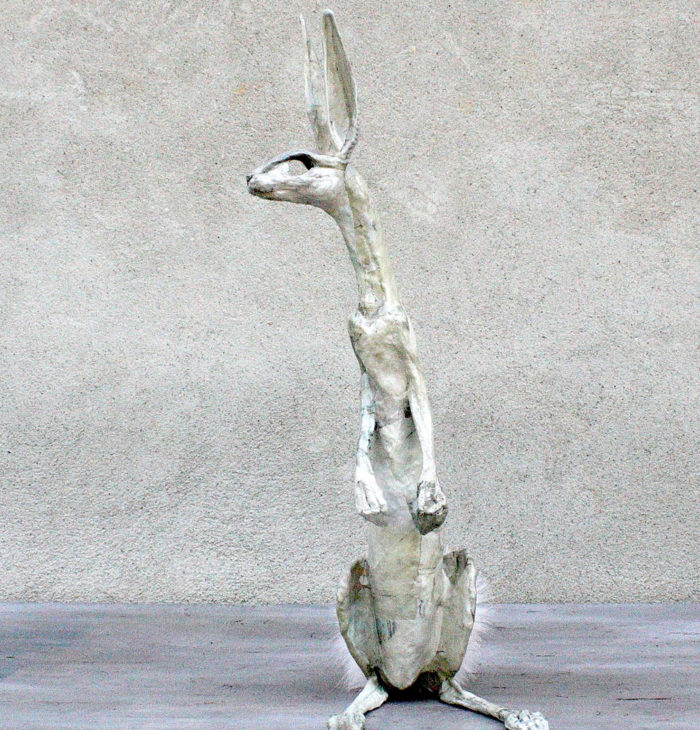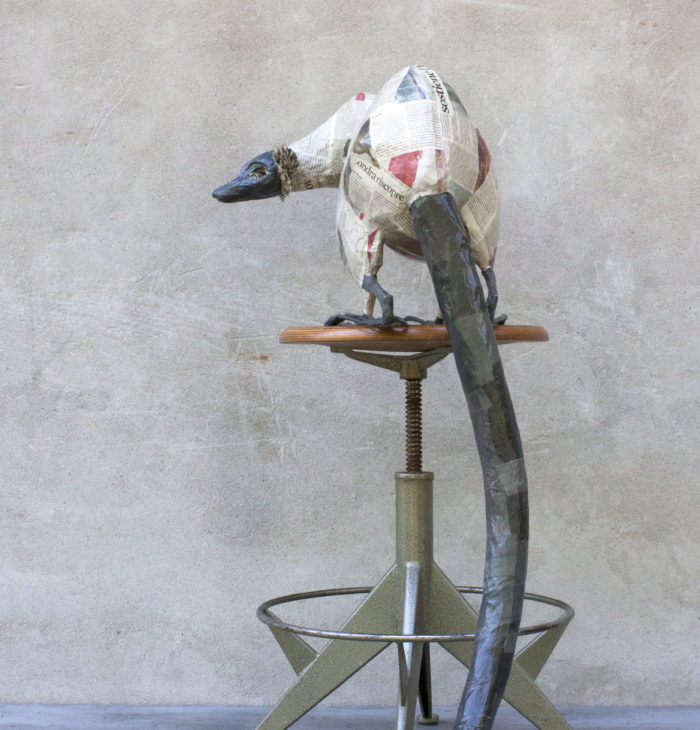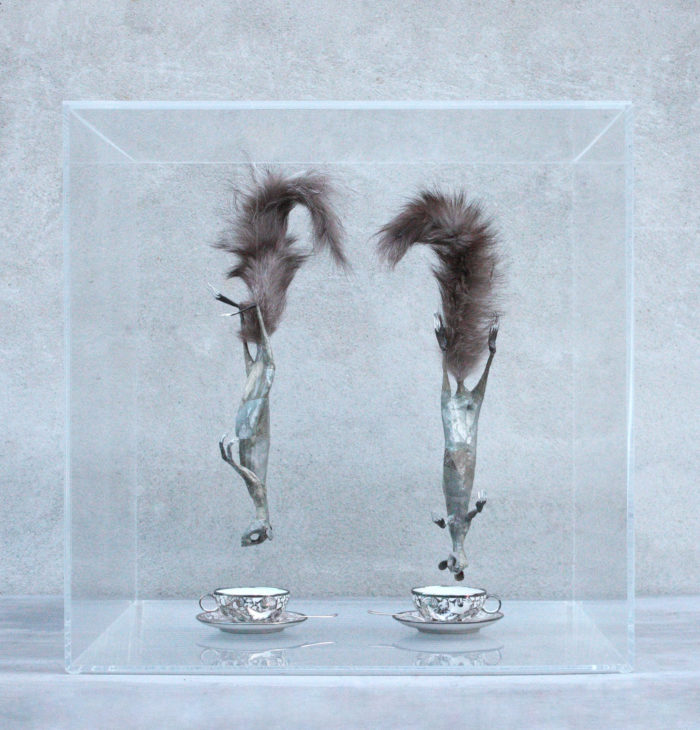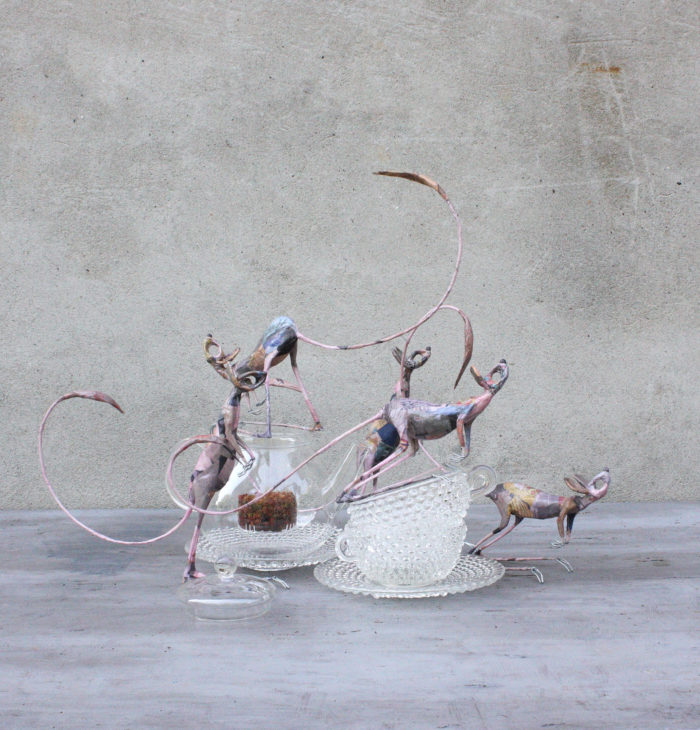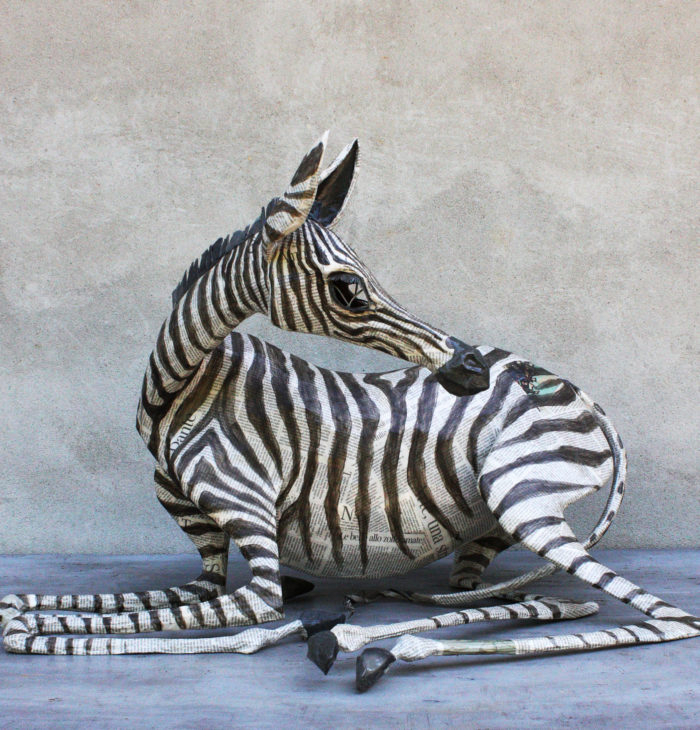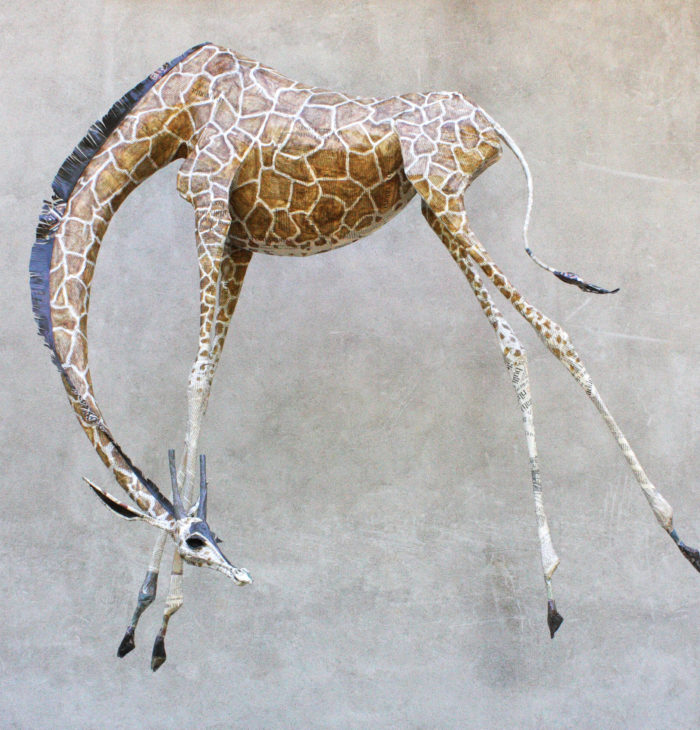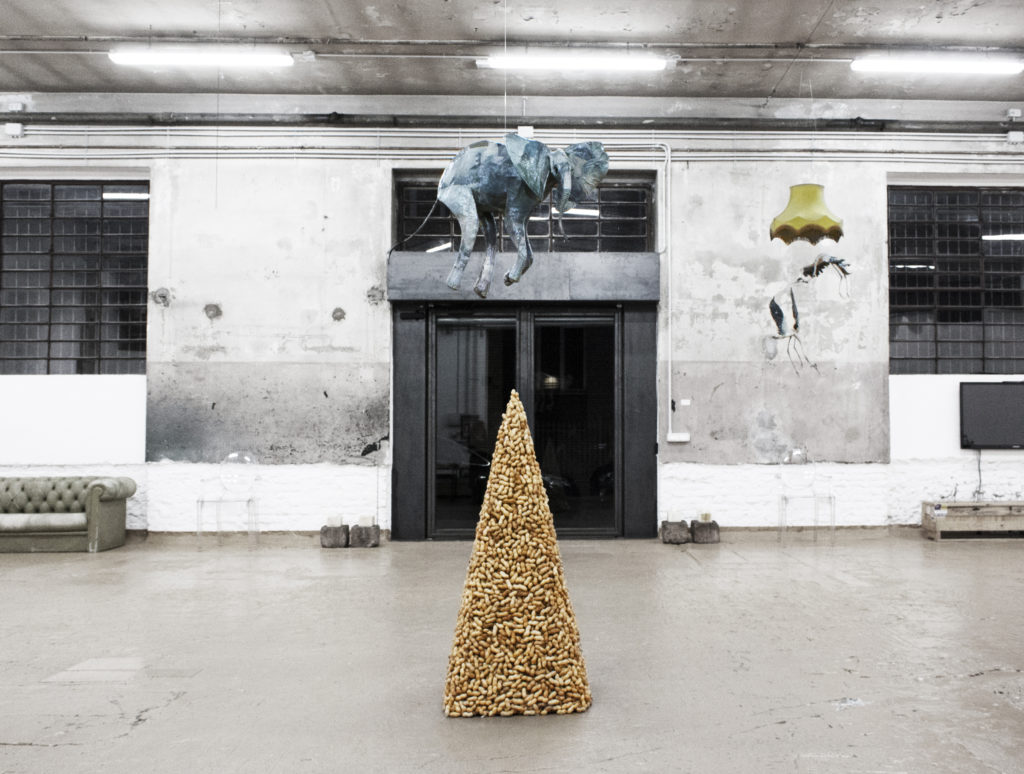
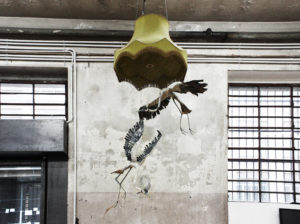
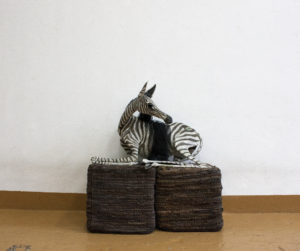 Circus Circes. Il Metamondo di Alice Zanin
Circus Circes. Il Metamondo di Alice Zanin
di Emanuele Beluffi
Innanzitutto il titolo, Circus Circes: la Circe è una figura mitologica, la maga dell’isola sperduta di Eea che nel poema epico greco Odissea trasformava gli uomini in maiali, leoni e cani, tenendoli prigionieri nella verdeggiante isola cui avevano fatto incautamente approdo.
Inversione uomo→animale che, nella galleria Bianca Maria Rizzi & Matthias Ritter, si rovescia -inversione dell’inversione!- nel suo opposto: gli animali di Alice Zanin fanno il verso agli animali non umani. Mentre il circo, ladies and gentlemen, gaia prigione moderna delle creature con coda e ali che han da soddisfare le crasse risate dei bipedi, diventa qui il contesto fatiscente dello spettacolo: una vera e propria realizzazione sito specifica, cioè pensata e fatta per questo spazio espositivo, una volta spazio industriale.
Le pareti diroccate della galleria Bianca Maria Rizzi & Matthias Ritter si armonizzano coi paraphernalia -un paio di eleganti e logore scarpe da signora, vecchie palline colorate recuperate al mercatino delle pulci, sedie da giardino in ferro consumate dal tempo, un vecchio paralume, valigie consunte e una bellissima bicicletta d’epoca- che accompagnano le sculture in cartapesta di Circus Circes: levrieri persiani, uccelli del paradiso, zebre, giraffe, topini gerboa e ricci africani, gru coronate e manguste, collocati come tableaux vivants, vere e proprie dramatis personae, in pose inusitate e umane troppo umane.
Perché questo è il retroterra concettuale della produzione artistica di Alice Zanin: la messa in scena di un metamondo, cioè di un modo formalmente e materialmente definito, per mezzo del quale riferirsi a un altro mondo.
Tutte le opere di Circus Circes conducono a una dimensione altra, per cui la bicicletta d’epoca con gli uccelli del paradiso (per l’esattezza Parotia lawesii) dell’installazione When I’m with you it’s paradise, ad esempio, non è solo ciò che si vede, cioè alcuni uccelli neri attorno a una bella bicicletta d’antan su cui è appoggiato un nido con delle uova azzurre, ma rappresenta il sentimento dell’amore (gli uccelli del paradiso fanno la danza di corteggiamento, le uova sono custodite all’interno di un nido e la stessa bicicletta può rappresentare il soggetto/soggetto del trasporto amoroso).
E’ il rapporto, proprio delle arti visuali, raffigurare/rappresentare: dare forma sensibile a un pensiero per mezzo di elementi che diventano simbolici. Come nel poema omerico, la maga Alice Zanin trasfigura gli animali in uomini attraverso gli incanti delle forme simboliche: ecco che allora i tre levrieri persiani (Caeruleus, Cineraceus e Inauratus) seduti su vecchie e consunte sedie in ferro interagiscono con oggetti d’uso umano -tre palline colorate, un paio di scarpe, una trombetta; da notare la coordinazione fra i colori degli oggetti e i rispettivi referenti, il ceruleo delle palline, il grigio delle scarpe e l’oro della trombetta-, in una situazione che a dispetto dell’apparenza non è un gioco, non è un divertissement: i tre quadrupedi non stanno facendo-finta-di, perché la messinscena di Circus Circes rappresenta una condizione estetico/esistenziale che potremmo piuttosto circoscrivere al dominio dell’effimero.
Gli oggetti dell’uomo, che naturalmente i tre cani non usano per lo scopo per cui sono stati realizzati, diventano qui corbelleria, simbolo di una certa fascinazione per la decadence: incanto per il bel declino che investe di sé tutta la mostra di Alice Zanin, rappresentazione sentimentale che riporta a vita nuova le vestigia del tempo, contestualizzandole in una situazione paradossale. Un po’ come i divani, le poltrone, gli armadi, i tavoli e le sedie che Giorgio De Chirico raffigurava in contesti spiazzanti e inusuali, generando un sentimento di spaesamento.
In questa occasione la “pelle” delle sculture è, appunto, liscia: ritagli di giornali, dall’artista accuratamente selezionati per cromie, del tutto privi di parole, che si distendono come epidermide lungo tutta la struttura dei corpi degli animali. Il risultato è un’accentuazione della plasticità di queste sculture: son fatte di carta e ferro, ma al tatto sembrano solide come il marmo.
C’è tutta Alice Zanin in questa mostra (l’attenzione è sempre orientata al corpo, visibile, palpabile, massivo), ma con una novità operativa: se nella precedente produzione il tema dominante era la favella (le volumetrie epidermiche della carta che ricopriva le sculture erano affastellate di parole), ora a dominare è l’affabile silenzio dell’interpretazione incompiuta, leggera e vagante: “slittamento” semantico dal mondo lineare degli animali a quello denso di sovrastrutture (Karl Marx docet!) del mondo umano -senza con ciò stesso accordare all’uno o all’altro regno una preferenza d’ordine estetico o morale.
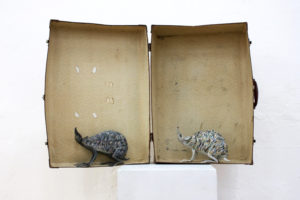
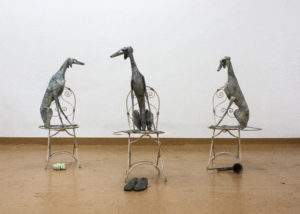
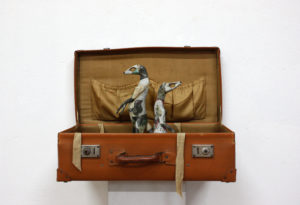
Circus Circes. The Metaworld of Alice Zanin
by Emanuele Beluffi
Firstly the title, Circus Circes: Circe is a mythological figure, the sorceress living on the remote island of Aeaea, who in the epic Greek poem Odyssey turns men into pigs, lions and dogs, and keeps them prisoners on the lush island where they had unwisely landed.
The reversal man → animal that, in the Bianca Maria Rizzi & Matthias Ritter gallery, overturns -the reversal of the reversal!- itself into its opposite: the Alice Zanin‘s animals mimic the non-human animals. As the circus, ladies and gentlemen, is the modern cheerful jail for creatures with tails and wings who have to fulfil the crass laughter of the bipeds, here it becomes the crumbling context of the show: a real site-specific accomplishment, which was designed and made for this exhibition space, which was once an industrial one.The crumbling walls of the Bianca Maria Rizzi & Matthias Rittergallery harmonise with the paraphernalia-a pair of elegant and worn out lady’s shoes, old coloured balls retrieved from a flea market, some garden chairs whose iron has been worn out by time, an old lampshade, some worn down suitcases and a beautiful antique bike- accompanying the sculptures in papier-mâchéof Circus Circes: Persian greyhounds, birds of paradise, zebras, giraffes, jerboa mice and African hedgehogs, crested cranes and mongooses, all placed as in a tableaux vivants, absolute dramatis personae, in unusual and too human poses.Because this is the conceptual background of the artistic production of Alice Zanin: the staging of a metaworld, a formally and materially defined world, through which refer to another world.All the works of Circus Circeslead to another dimension. So the vintage bicycle surrounded by birds of paradise (Parotia lawesii, actually) of the When I’m with you it’s paradise installation, for example, is not only what one sees, namely some black birds around a beautiful vintage bicycle upon which a nest full of blue eggs is leaning, but it represents the feeling of love (birds of paradise are well known for their courtship dance, the eggs are protected in a nest and the very bicycle can be seen as the subject/object of the loving transport).It is the relation, distinctive of the visual arts, to portray/ to represent: to give a tangible form to a thought by means of elements that become symbolic. As in the Homeric poem, the sorceress Alice Zanin transfigures animals into men through the magic of the symbolic forms: here the three Persian greyhounds (Caeruleus, Cineraceusand Inauratus) by sitting on dated and worn out iron chairs, interact with objects of human usage – three coloured balls, a pair of shoes, a trumpet; to be noted is the coordination of the colours of the objects and their respective referents, the cerulean of the balls, the grey of the shoes and the trumpet’s gold-, in a situation that, despite any appearances, is not a game, nor a divertissement: the three quadrupeds are not pretending, because the staging of Circus Circes represents an aesthetic/existential condition that we could rather circumscribe to the domain of the ephemeral. The man’s objects, which, of course, the three dogs are not using with the purpose for which they were made, thus become nonsense, symbol of a certain fascination for the decadence: an enchantment for the beautiful decline that pervade the whole exhibition of Alice Zanin, an emotional representation that brings new life to the time’s vestiges, contextualizing them in a paradoxical situation. A little bit like the sofas, armchairs, closets, tables and chairs that Giorgio De Chirico used to depict in his unusual and wrong-footing contexts, thus creating a sense of disorientation. On this occasion the “skin” of the sculptures is, precisely, smooth: newspaper clippings, carefully selected by the artist for their colours, wholly lacking in words, which extend themselves like skin along the whole structure of the animals’ bodies. The outcome is an intensification of the plasticity of these sculptures: they are made of paper and iron, but appear to be solid as marble to the touch. There is the whole Alice Zanin in this exhibition (the focus is always directed to the body, visible, palpable, massive), but with an operative novelty: if in the earlier production the major theme was the speech (the paper’s epidermal volumetries that covered the sculptures were full of words), now the affable silence of the unfinished, light, and wandering interpretation is dominating: a semantic “shift” from the linear world of the animals to that full of superstructures (Karl Marx docet!) of men -this without grant an aesthetic or moral preference to one or the other realm.
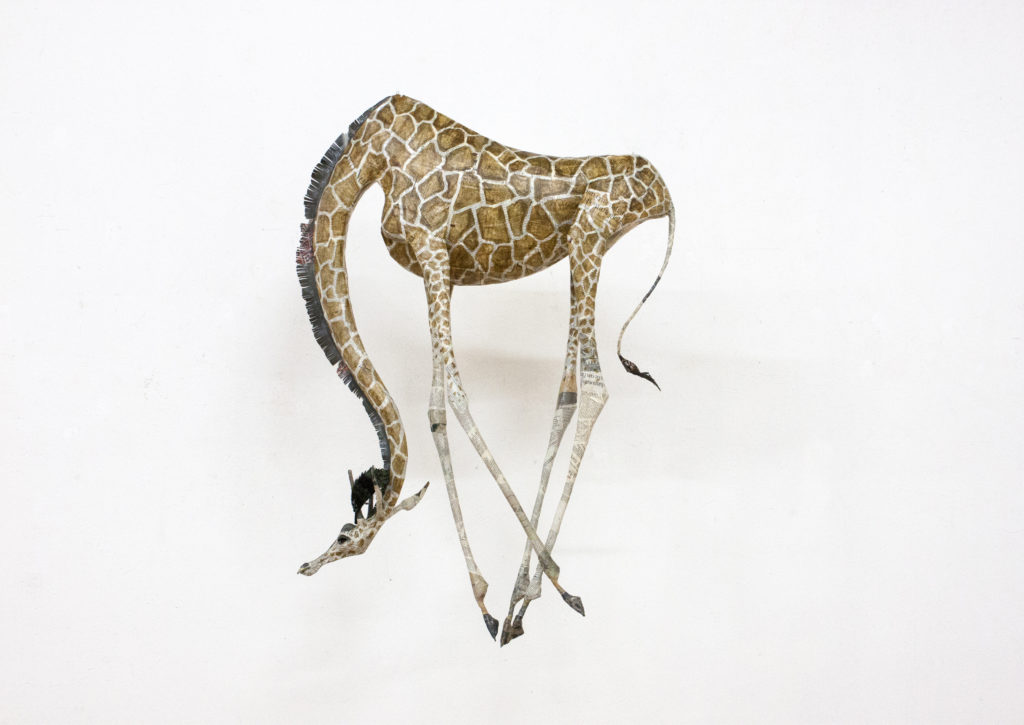
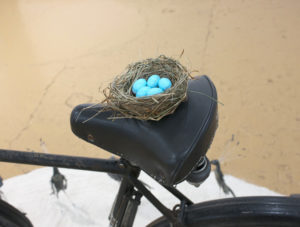
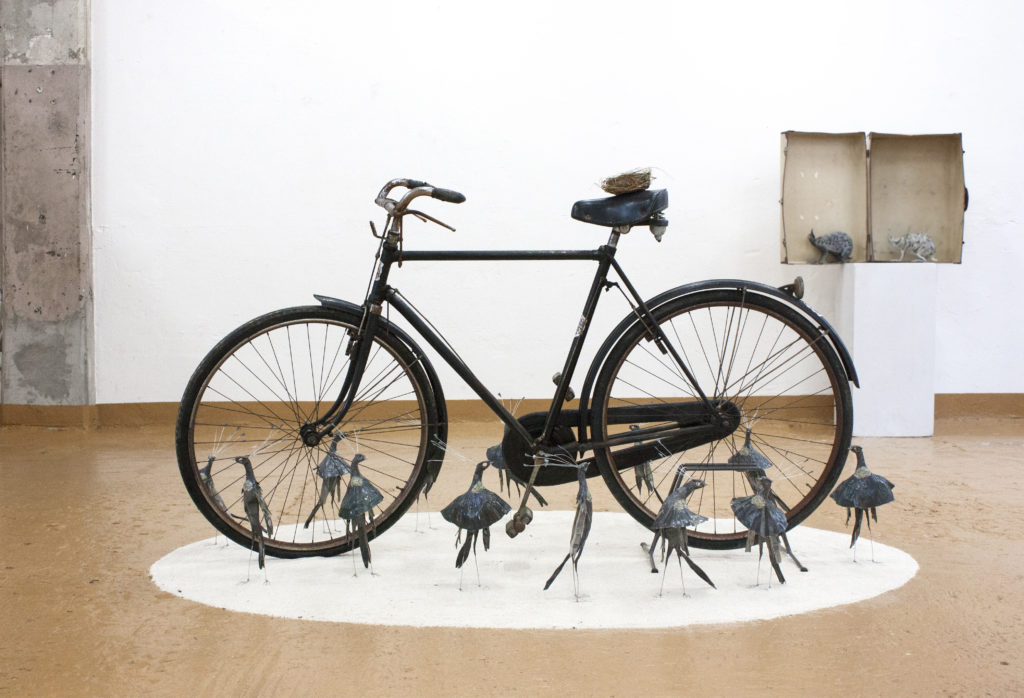
COLLECTION
